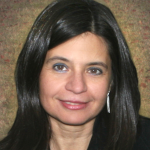The other day in yoga class, I saw someone wearing a t-shirt that said: I’m in it for the Shavasana. I had never seen that shirt before, and it struck me that someone would feel strongly enough ab out that to put it on a t-shirt, especially because I tend to focus more on the stretching and strengthening aspects of the practice. While I always welcome that final pose after a yoga practice, Shavasana, or Corpse Pose, I would not have focused the value of my yoga practice on that final rest that lets the nervous system integrate all that the body and mind have done.
out that to put it on a t-shirt, especially because I tend to focus more on the stretching and strengthening aspects of the practice. While I always welcome that final pose after a yoga practice, Shavasana, or Corpse Pose, I would not have focused the value of my yoga practice on that final rest that lets the nervous system integrate all that the body and mind have done.
I have had to ask myself what is behind my attitudes about where I place value, specifically with respect to action and to rest, to achieving and to being. It is very easy to see that our modern society is obsessed with action—we love a good action-packed movie, or taking action on a cause, and so on. And that is good. We are by nature, Creator Beings, and acting is as natural as breathing.
But, in every breath, there is an in-breath and an out-breath. And there is a pause in between. We cannot continually breathe in or breathe out and expect to live. There is a right balance that includes both aspects, and that balance makes each of the cycles of our breath stronger, more efficient and more effective. We need to be expert at acting, and we need to be expert at resting.
 So often in our modern world, we think of resting as a passive, zoned-out or comatose state induced by sleep or substances or a beach vacation. But, is there such a thing as active, intentional rest, and what is that, and how might it matter? Upon first consideration, active rest sounds like an oxymoron—either we should be active or we should be passed out! The more we flesh out the dynamic, the more it becomes clear that something here is out of balance. So, how do we restore some reason in this cycle that is so common in our world?
So often in our modern world, we think of resting as a passive, zoned-out or comatose state induced by sleep or substances or a beach vacation. But, is there such a thing as active, intentional rest, and what is that, and how might it matter? Upon first consideration, active rest sounds like an oxymoron—either we should be active or we should be passed out! The more we flesh out the dynamic, the more it becomes clear that something here is out of balance. So, how do we restore some reason in this cycle that is so common in our world?
I am drawn to the concept of the Sabbath. Shabbath, from the Hebrew, meaning “day of rest.” The day of rest was the seventh day in a cycle, after the action had been done in the first six days. There is deep significance in observing the Sabbath, and sadly, that significance has been largely lost in the world at large, where for many, Saturday becomes a day to do errands or stay up late and party.
As we look at the many expressions of the Shabbath in all its cycles and applications, large and small, we begin to remember the gifts of this intentional and active rest. Modern day science understands the importance of sleep to rebalance the body and bring healing to our mind and emotions. The benefits of a mindfulness practice, which is very much a deep presence in a state of rest that is receptive and alert, has been demonstrated in many research studies to restore wellbeing in many ways. The state and dynamic of psychophysiologic coherence, which has been found to be present as one activates positive emotions, speaks of a heart that is functioning in an easy rhythm, and is providing a point of entrainment for other organ systems of the body such that effective function may occur, and along with that, physical, mental and emotional wellbeing. It is another form of active rest, we could say, allowing the nervous system to not work so hard as it knows that all is well and it can attend to deeper functions, beyond managing the next fire or spurt of activity that is not grounded in inner silence.
That inner silence is the evidence that we are present in our spiritual home. It is in the spiritual silence that we can hear the “still, small voice.” Where we can hear the voice of our own insights and guidance for appropriate action; where we can hear what others are really saying, and what the circumstances around us are saying. It is the place of centering for our primal spirituality—that spirituality which is native to who we are as creator Beings, which is coded into our very cells and patterns of life. If we cannot hear that inner voice, we are subject to losing our primal spirituality only to follow a louder voice from without. That outer voice does not know where we need to go, where we are called on to act or to rest.
The beauty of the end of a cycle is worth honoring with sacred rest, with the Shabbath. Not just one day a week, but moments in between activities, between cycles of life, within oneself and with others. These are holy because they make us whole. They bring healing, which stems from the Greek word holos, meaning whole. We crave this sacred state, so let us honor it. Let us remember this deep knowledge and restore wholeness. I’m in it for the Shavasana – how about you?
– Dr. Maria Zayas
 Dr. Maria Zayas is a practicing psychologist, teacher and researcher in integrative health and well-being. Dr. Zayas uses her scientific knowledge and holistic perspective to design growth experiences that are uplifting and playful. She is a great believer in the healing power inherent in everyone, and the power of a caring community in restoring the capacity of individuals to live a full, meaningful and joyful life.
Dr. Maria Zayas is a practicing psychologist, teacher and researcher in integrative health and well-being. Dr. Zayas uses her scientific knowledge and holistic perspective to design growth experiences that are uplifting and playful. She is a great believer in the healing power inherent in everyone, and the power of a caring community in restoring the capacity of individuals to live a full, meaningful and joyful life.
Hello Maria – Peter Watson here – I just had a letter from David K, and you had mentioned to David having met me at Llanteglos – how did you come out of Grant Clarke’s camp to be at the Ranch?
I’m sure we all have unique interesting stories of our movements in and around the body-of-God on earth. Thankfully, a few of us are part of life’s circulating light-energy, and no longer aimlessly going to-and-fro, and up-and-down in the world, seeking happiness – as the US Constitution gives licence – instead of being alive and bringing happiness.
I enjoyed reading your article on acting and resting, and yes, there has been a great deal of cultural negativity around resting, even guilt in being inactive. During the Victorian era in the UK, a man had not only to be working, he had to be seen to be working.
As no doubt you’ve experienced in your Yoga exercises, there can be a sublime subconscious energy-boost during physical stillness. In Paris, during my troubadour days, my guitar was stolen out of my car. I had no other means of income, but I’d seen the community street artists coming back to our café after doing their chalk drawings on the sidewalks and pouring out on the café table their hatsful of change and notes from their days work.
Being resourceful, I found some white chalk and an abandoned pavement-art site, put out my collection-box with “Merci” and “Thank You” in several languages, and refreshed the outlines of the drawing in white. The money was rolling in, but you would not believe how exhausting this work can be! I was contorting my body in all sorts of poses to appear artistic to the tourist crowds that gathered round to watch. Without realizing it, I was holding a lot of unfamiliar difficult Yoga poses.
Anyway, and here’s the interesting part, after work when I returned to my room, I was too exhausted to even bathe and wash the day’s grime from my hands and face. I simply had to lay down. However, I was too ‘wired’, energetic, to sleep, but I would lie perfectly still, and, in about twenty minutes, amazingly, I felt perfectly refreshed, so I know what you mean about the value of inactivity for the right amount of time. It is the sweetest return to consciousness imaginable.
Of course, having discovered the value of rest-action – the same as the heart-beat – it can be creatively applied to conscious emotional control – “Let not your heart be troubled, neither let it be afraid” (JC) – as well as to purposeful thinking. As we’ve discovered, there’s an art-and-science in learning to think, objectively, without incurring the ingrained habit of judgement — “Be still and know that I am” — that otherwise obscures true self-awareness.
So, Maria, enough of my stories, except to mention that all is well at Llanteglos. I look forward to your news. Warmest regards, Peter